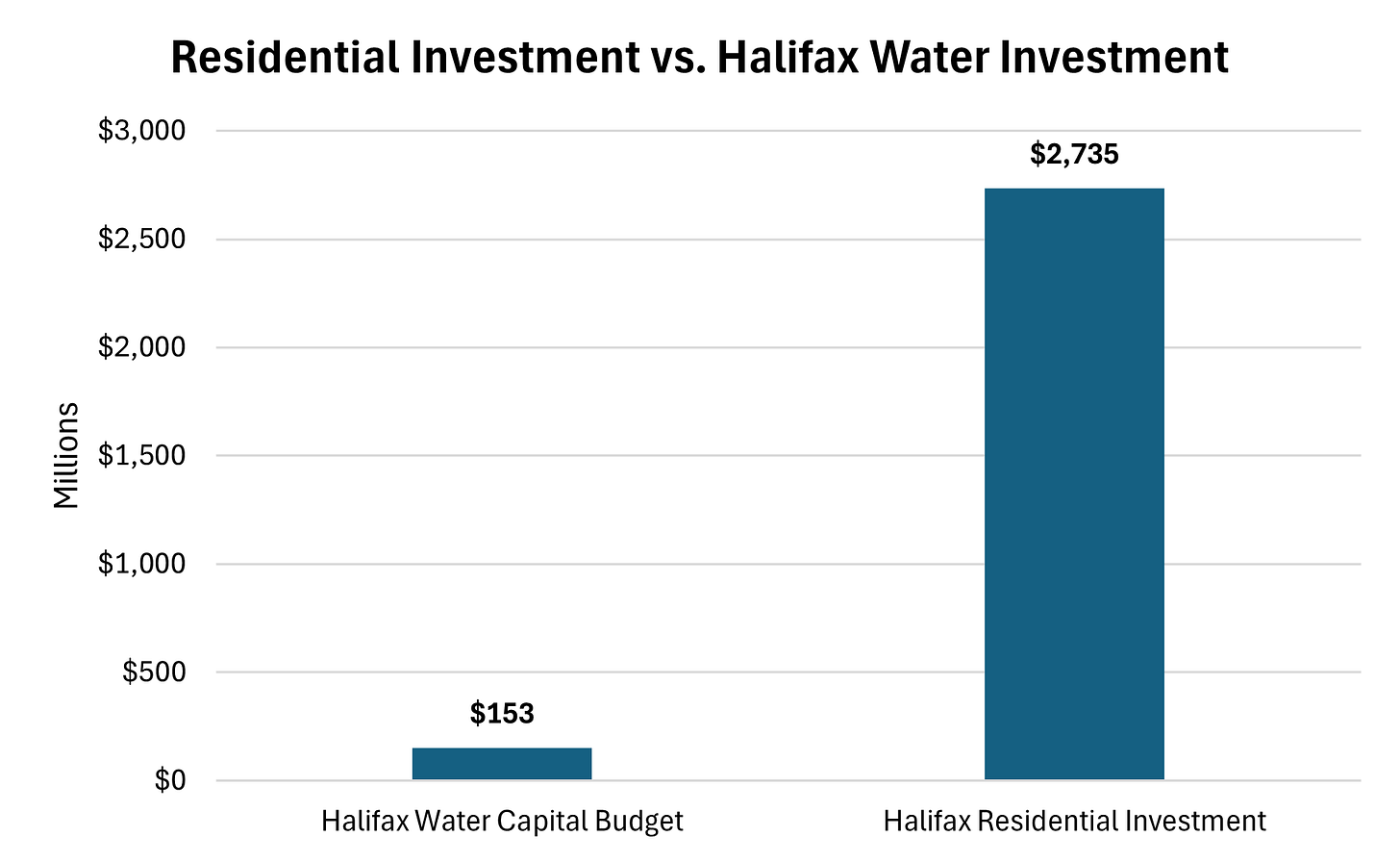Sometimes bureaucracies can lose the big picture, focusing on their own goals. This is especially true of public bureaucracies, who don’t have the guiding light of profit - they can go into all sorts of directions (including excessively trying to minimize current prices at the expense of the future).
It’s become apparent the more I’ve spoken to folks in housing policy that Halifax Water looms large. If that sounds weird, you are right, and I think the informed folks have lost the plot.
The basic problem is that Halifax Water has the job of making sure that its pipes have enough capacity around the municipality. In a growing city, sometimes pipes fill up. But we seem to accept that when we hit capacity, growth should be halted, or that the next person in line looking to build needs to shoulder the costs. There’s an interesting debate to be had about how to spread the costs of growth, but debating that too much is a waste of time:
The costs of inaction
The reality is that Halifax provides an essential service, but it’s not a large cost item. With $168m in revenue last year spread across its 106,000 customers, the average Halifax Water bill amounts to $133 per month. That includes commercial clients as well, so a typical residential bill is much less.
Yet - by blocking growth - either explicitly or by forcing the costs of new pipes onto new housing, the utility is unwittingly driving much larger costs higher for residents. The average rent for a 1-bed is $1400 per month, and close to $2,000 if you are moving today.
The simple way to think about this is that a doubling of Halifax Waters required revenues would pay for themselves if rents or home prices fell 5-10% with the growth enabled by more pipes. The influence they exert on new housing is far more important than the dollars they collect. So to be slightly rude, Halifax Water should not be in a position to ever declare max capacity - investments should be automatically triggered when approaching capacity.
If you are a more “serious” person, who cares less about the challenges facing renters and new home buyers, there is still a problem with Halifax Water’s position. Last year, Halifax Water invested $153 million in new pipes and equipment. But total residential construction investment in Halifax was $2.74 billion. Again, if Halifax Water doubled its capital investment - enabling even a ~5% increase in residential investment would put the city in a better place economically. But it would lead to bad media articles and complaints - so Halifax Water acts and is likely encouraged to continue focusing on its largely irrelevant finances.
The water issue is especially important because (as I understand it), the capacity issues are most evident on the peninsula (especially the South End and the former industrial sites along Young st). I suspect that some like the water excuse - it’s not that I’m a NIMBY, it’s that pipes are full! Just don’t ask us to expand the pipes either.
Fundamentally, the water excuse is a weak argument against putting more housing in our densest part of the city - where other infrastructure constraints are much weaker. The peninsula is the only part of Nova Scotia where near-majorities walk, bus, or bike to work, and pushing more folks out to save the pipes is recipe for a longer drive to work and more expensive housing.








Great write up as always. Incredible to think any city department using infrastructure as an excuse to limit organic growth.
Thanks Deny - that's a really clear and persuasive explanation. Forwarding far and wide.